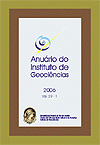Sugar cane, orange and herbaceous cotton climatic zoning for the Northeast region of Brazil
DOI:
https://doi.org/10.11137/2006_2_30-43Abstract
The present study had as objective to carry through a climatic zoning of the Northeast Region of Brazil for sugar cane, orange and herbaceous cotton cultures. The choice of these cultures was made through the identification of factors as the production performance, the dissemination of the culture in the region, the potential market and the social importance. The results were gotten through analysis of the water balance and average, maximum and minimum temperatures for meteorological stations located in 23 cities in the region. Water balance, calculated for the method of Thornthwaite & Mather (1955), and temperature data were gotten through the Climatic Data base of Brazil (EMBRAPA, 2003). The cities have been classified in apt, restricted, restricted-inapt and inapt, in accordance with the climatic requirements of each culture. The majority of the cities presents water restrictions for the sugar cane and orange agriculture while two-thirds of these were considered apt for the herbaceous cotton culture.Downloads
Download data is not yet available.
Downloads
Published
2006-01-01
How to Cite
Waldheim, P. V. (2006) “Sugar cane, orange and herbaceous cotton climatic zoning for the Northeast region of Brazil”, Anuário do Instituto de Geociências. Rio de Janeiro, BR, 29(2), pp. 30–43. doi: 10.11137/2006_2_30-43.
Issue
Section
Article
License
This journal is licensed under a Creative Commons — Attribution 4.0 International — CC BY 4.0, which permits use, distribution and reproduction in any medium, provided the original work is properly cited.















